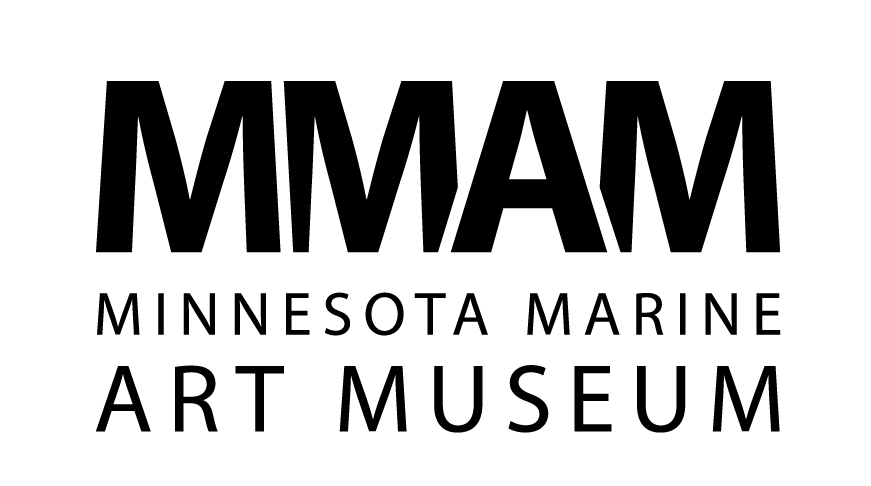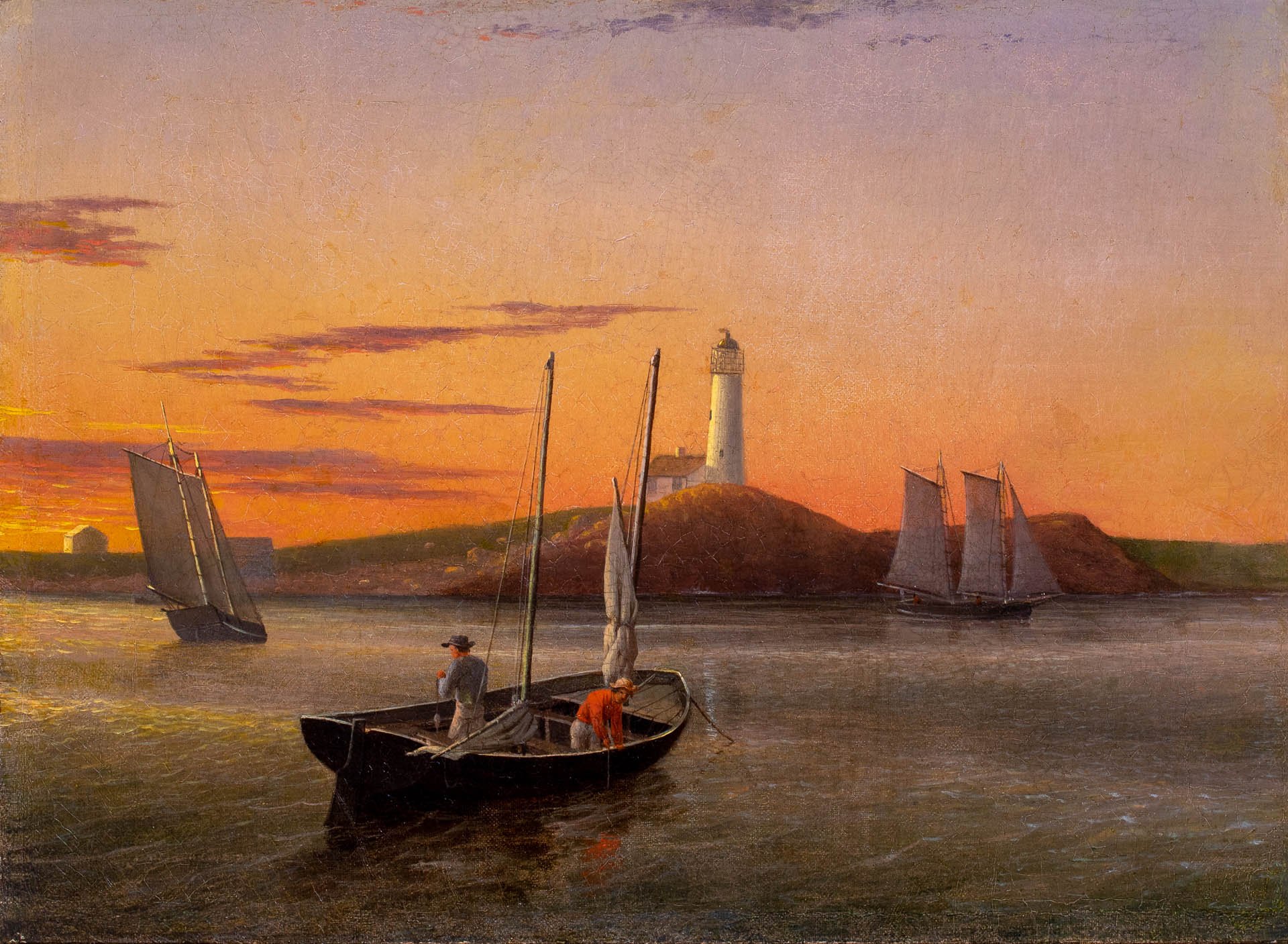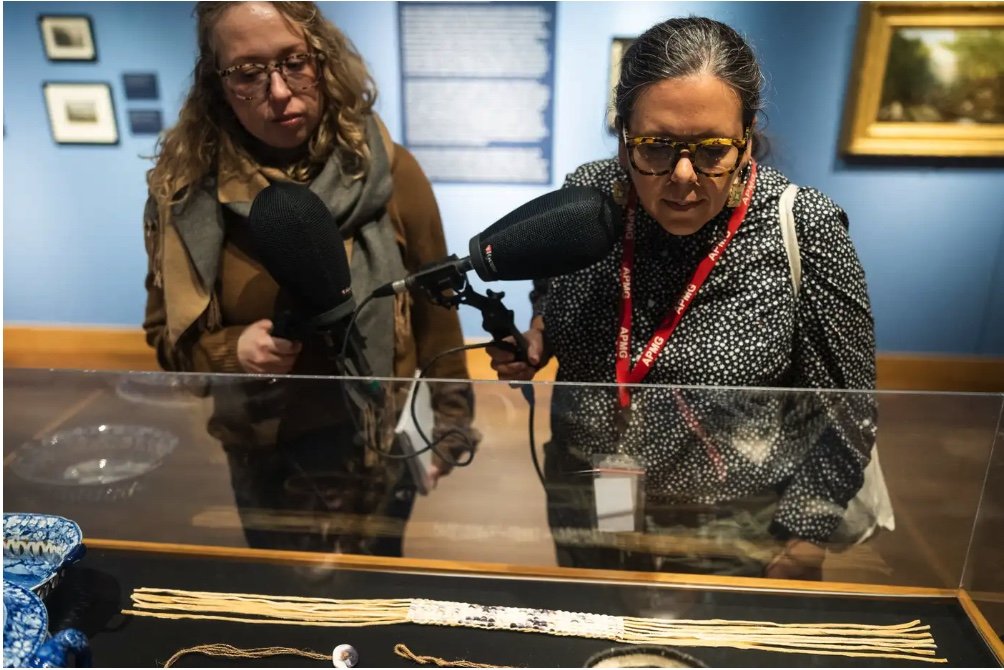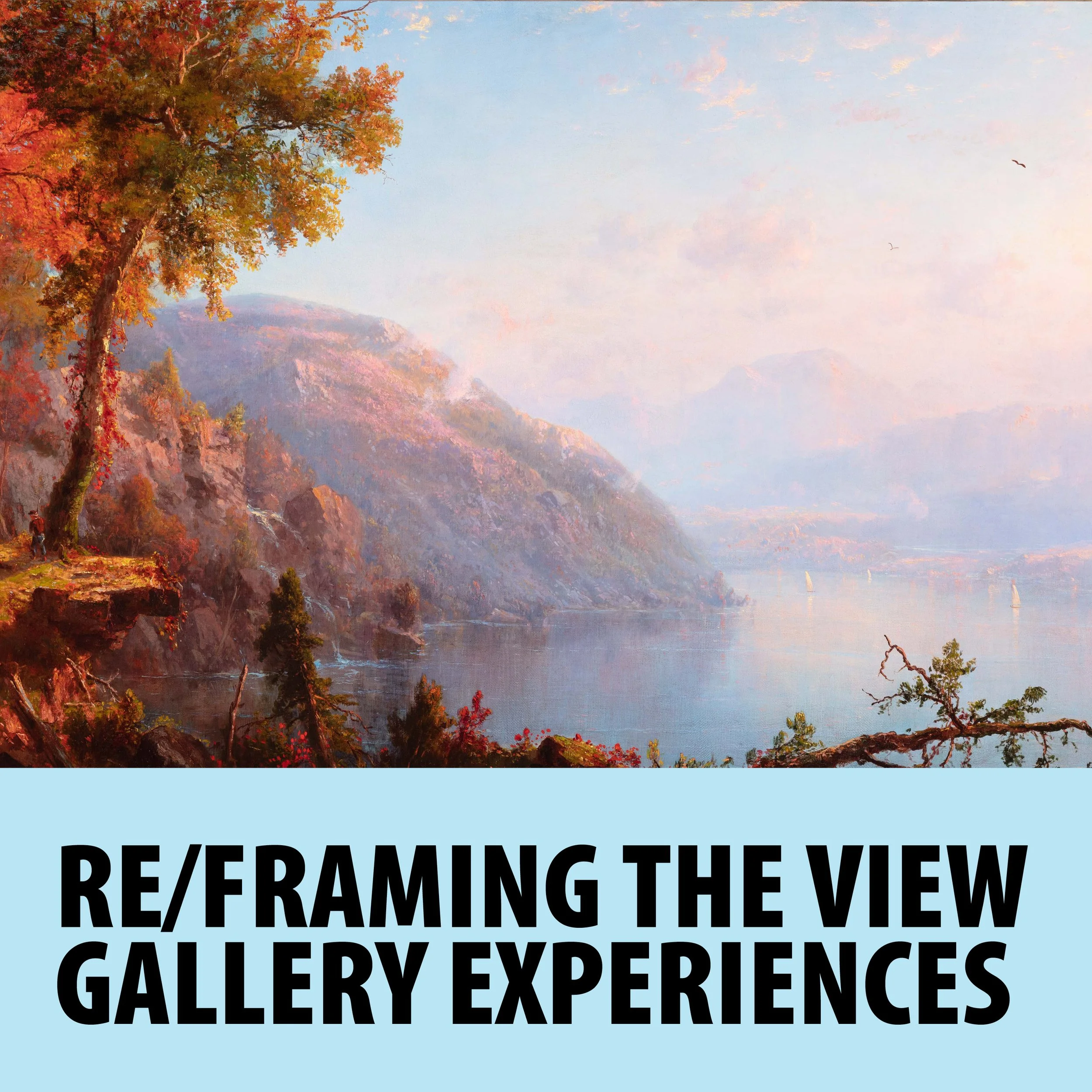Re/Framing The View: Nineteenth-century American Landscapes
On view October 14, 2023 - August 4, 2024
Régis François Gignoux (French/American, 1816-1882), On the Upper Hudson, 1862. Oil on canvas. Douglas and Cynthia Crocker Collection.
Mary Blood Mellen (American, 1819-1886), Sunset off Ten Pound Island, 1882. Oil on canvas. Douglas and Cynthis Crocker Collection.
Nineteenth-century American artists are well known for their depictions of nature and the outdoors, for their commitment to creating a national “school” of painting, and for their documentation and idealization of scenery ranging from the imagined and pastoral to the dramatic and sublime.
Drawn from six private collections, the New Bedford Whaling Museum collection, and six strategic institutional loans, Re/Framing the View: Nineteenth-century American Landscapes includes works by William Bradford, John F. Kensett, Martin Johnson Heade, Frederic Edwin Church, Albert Bierstadt, Jasper Francis Cropsey, George Inness, Francis A. Silva, and Sanford Robinson Gifford, among many others.
As this list suggests, the majority of US based nineteenth-century American painters were men, and heading out into the wilderness to capture the scene was viewed as a masculine pursuit. A selection of objects – including china, nature studies in watercolor, and decorative arts – underscore the gendered aspects of American landscape painting by demonstrating where and how women participated in capturing American flora and fauna.
The realities of women’s opportunities in the arts are elaborated upon through paintings and prints by Fitz Henry Lane and Mary Mellen; Asher B. Durand and Lucy Maria Durand Woodman; Evelina Mount, Adelheid Dietrich, and Claude Raguet Hirst; and Mary Nimmo Moran and Ellen Day Hale.
While the exhibition celebrates the work of these artists, it also offers a layered interpretation of the cultural and historical meaning of such paintings. What such artists often failed to capture are the environmental conditions and social concerns that may underlie picturesque imagery.
Frederic Edwin Church (American, 1826-1900), New England Lake, c. 1854. Oil on canvas. Douglas and Cynthia Crocker Collection.
The exhibition therefore aims to recast such orthodox American landscape paintings through a careful consideration of the roles women played in picturing nature – via still life, needlepoint, watercolor, and decorative arts, and the ways in which environmental degradation, Federal Native American removal policies, and racialization are either pictured or erased in American scenes.
Contemplating the paintings versus the subject matter, labels, interpretive texts, and strategic juxtapositions allows us to question what we “see” in the scene versus what we know was happening. Themes explored include the environmental and cultural violence underlying nineteenth-century American landscape painting, including manifest destiny, settler colonialism, and Native removal; material extraction and industrial expansion; agricultural development and fisheries; and global exploration and imperialist projects.
By interrogating the place of gender, race and ethnicity, as well as environment and ecology, we re/frame the view and stage meaningful conversations about historical and contemporary issues and events.
The exhibition promises to be an exciting and timely invitation to view paintings held in private hands and usually hung behind closed doors – and explore the many meanings of the American landscape, both historically to nineteenth-century viewers and today for twenty-first century audiences.
“By interrogating the place of gender, race and ethnicity, as well as environment and ecology, we re/frame the view and stage meaningful conversations about historical and contemporary issues and events. ”
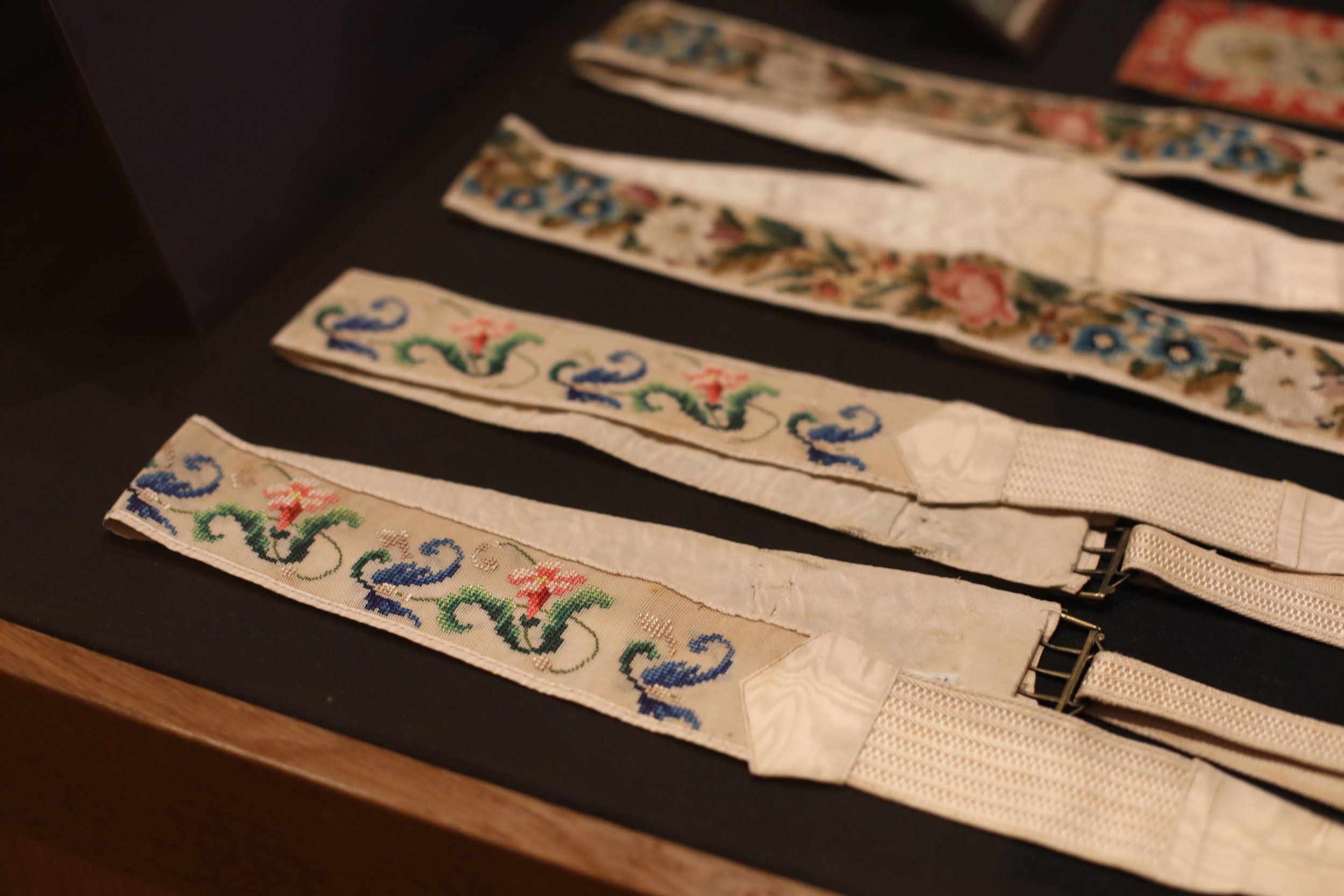

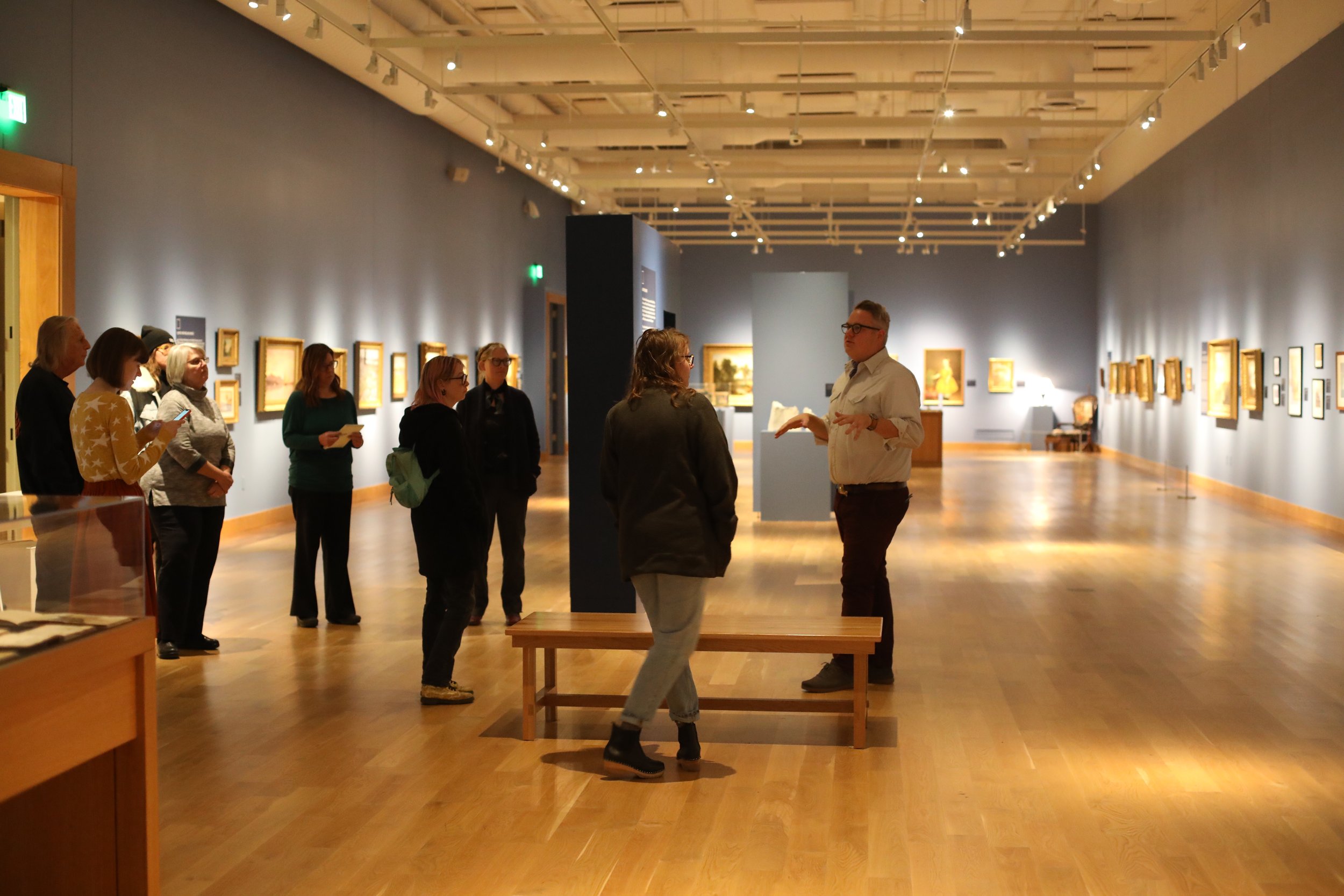
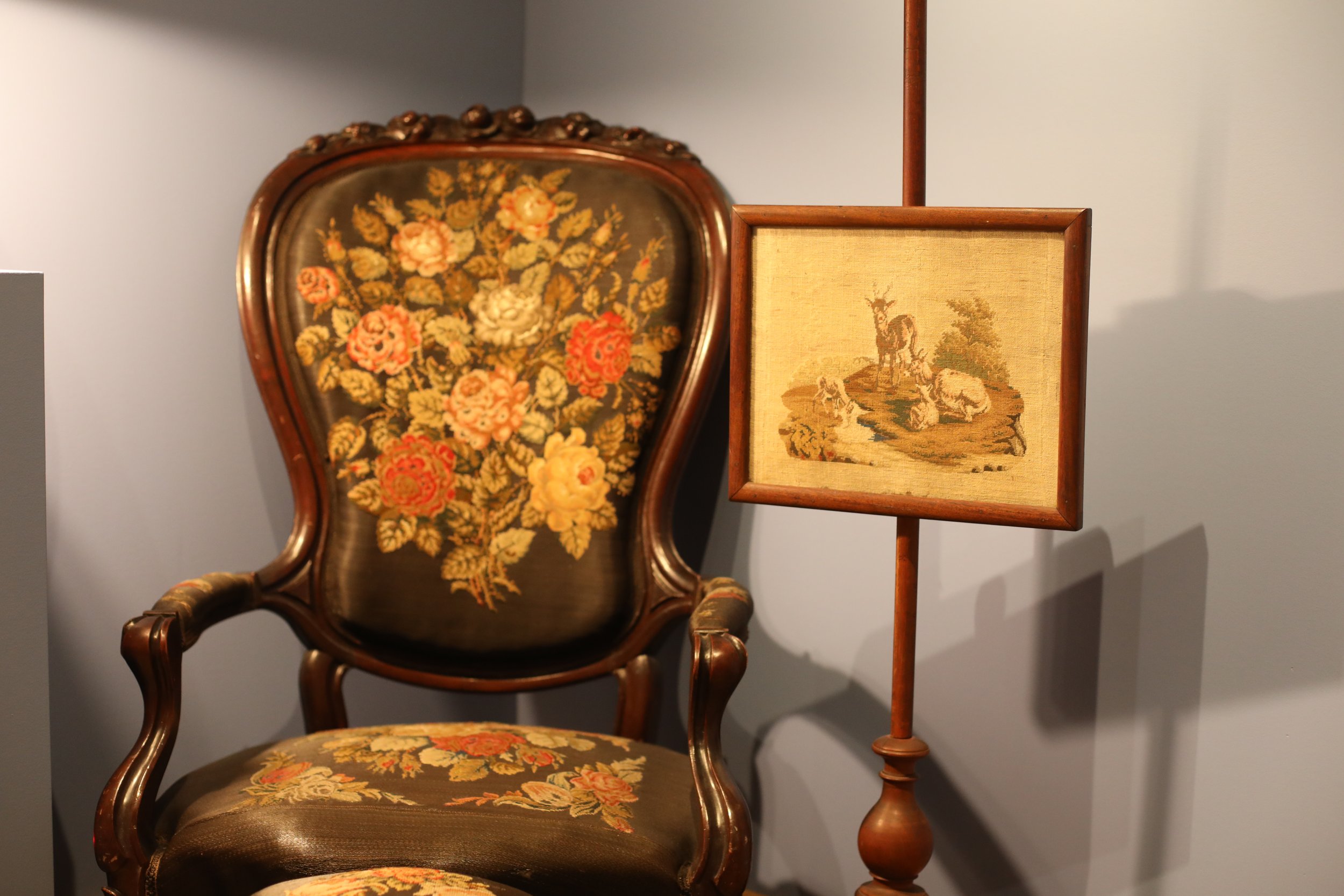
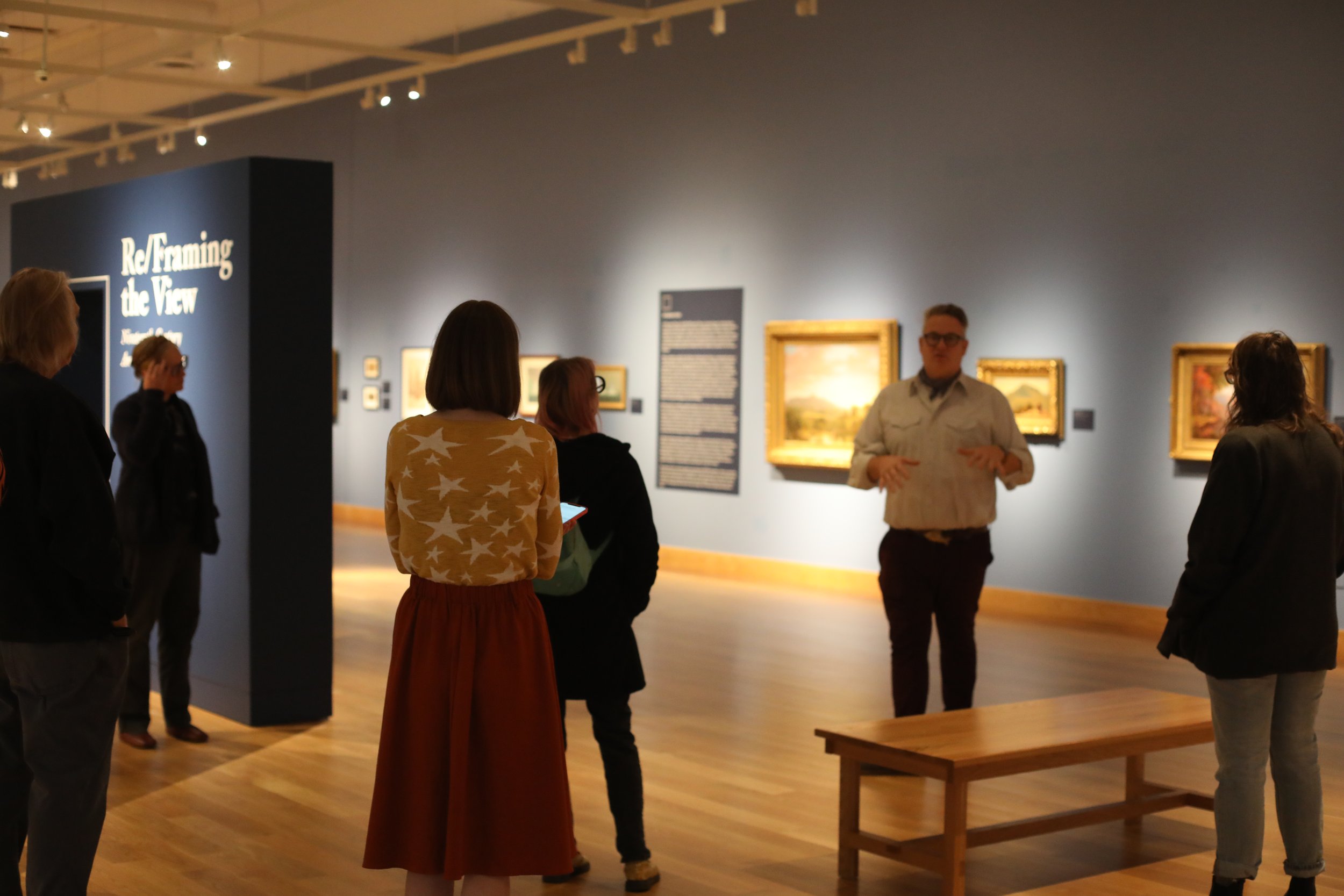
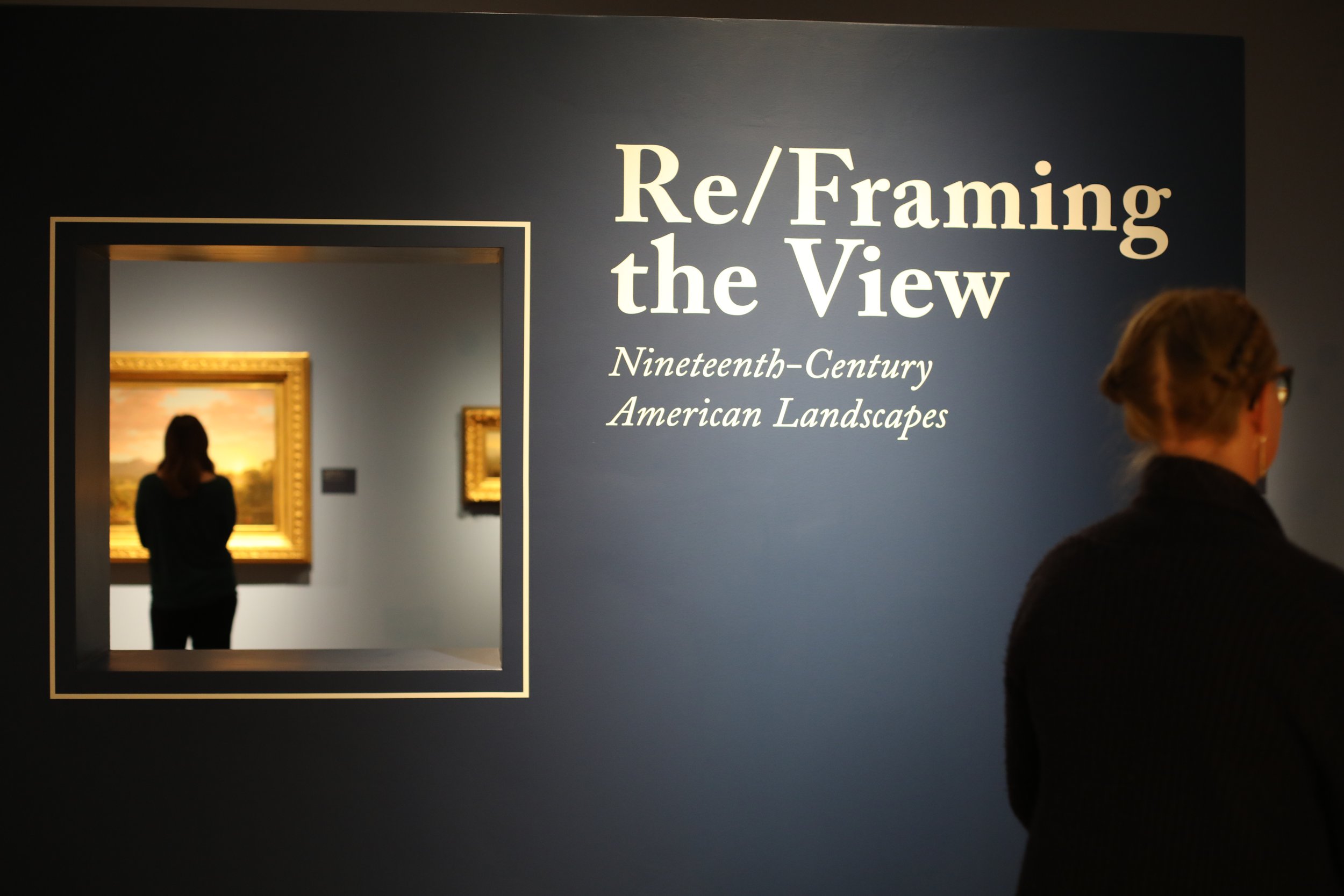
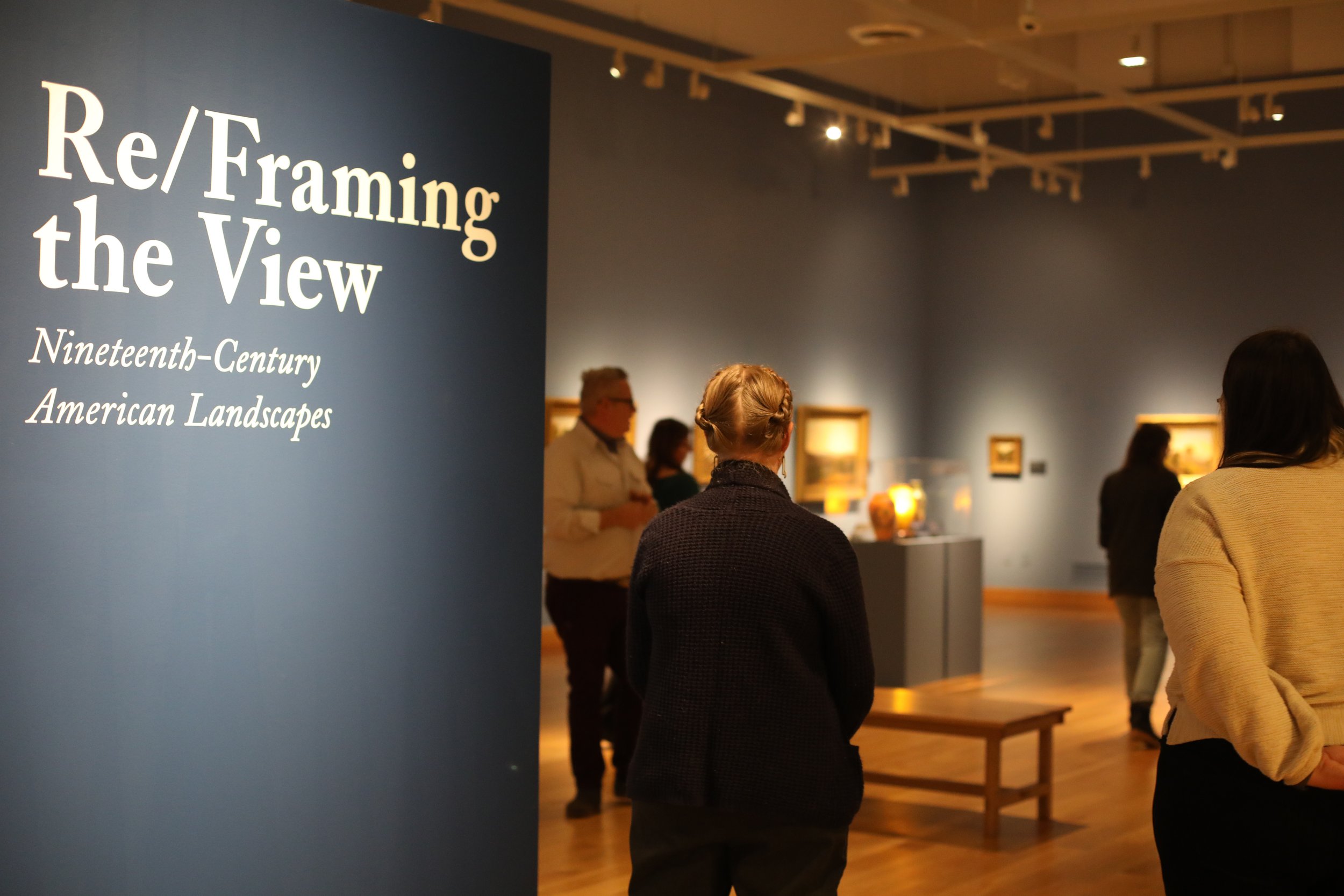
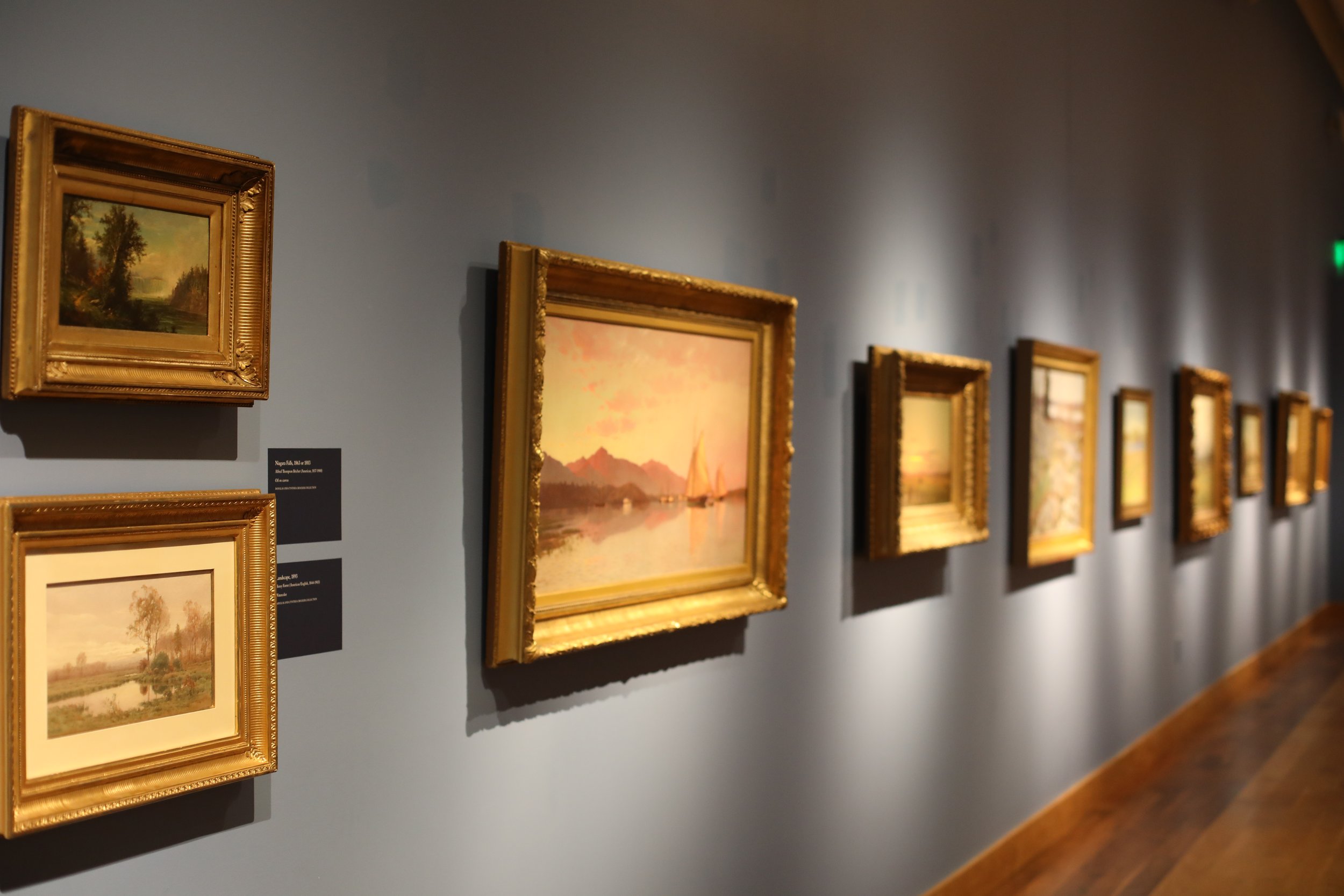
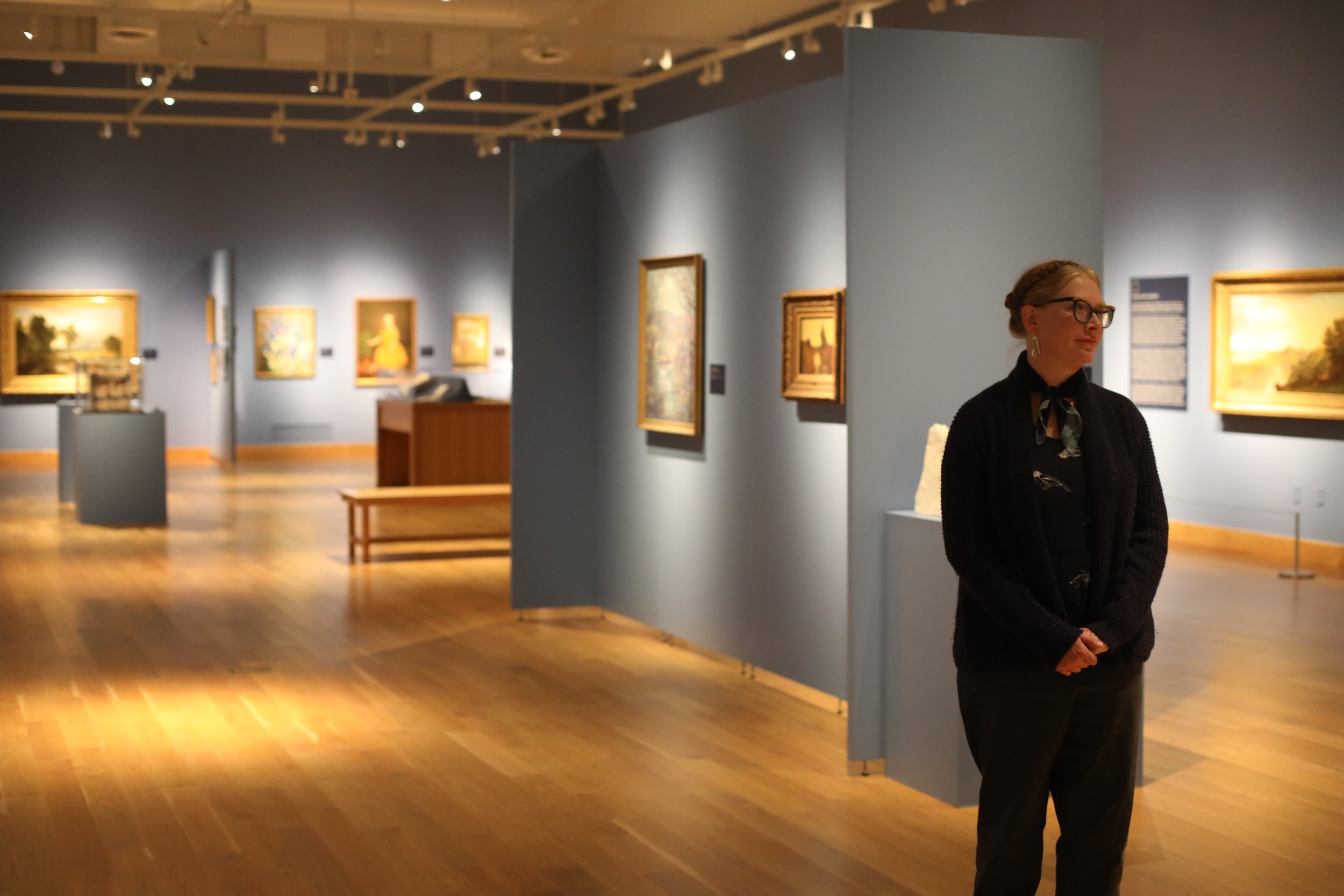
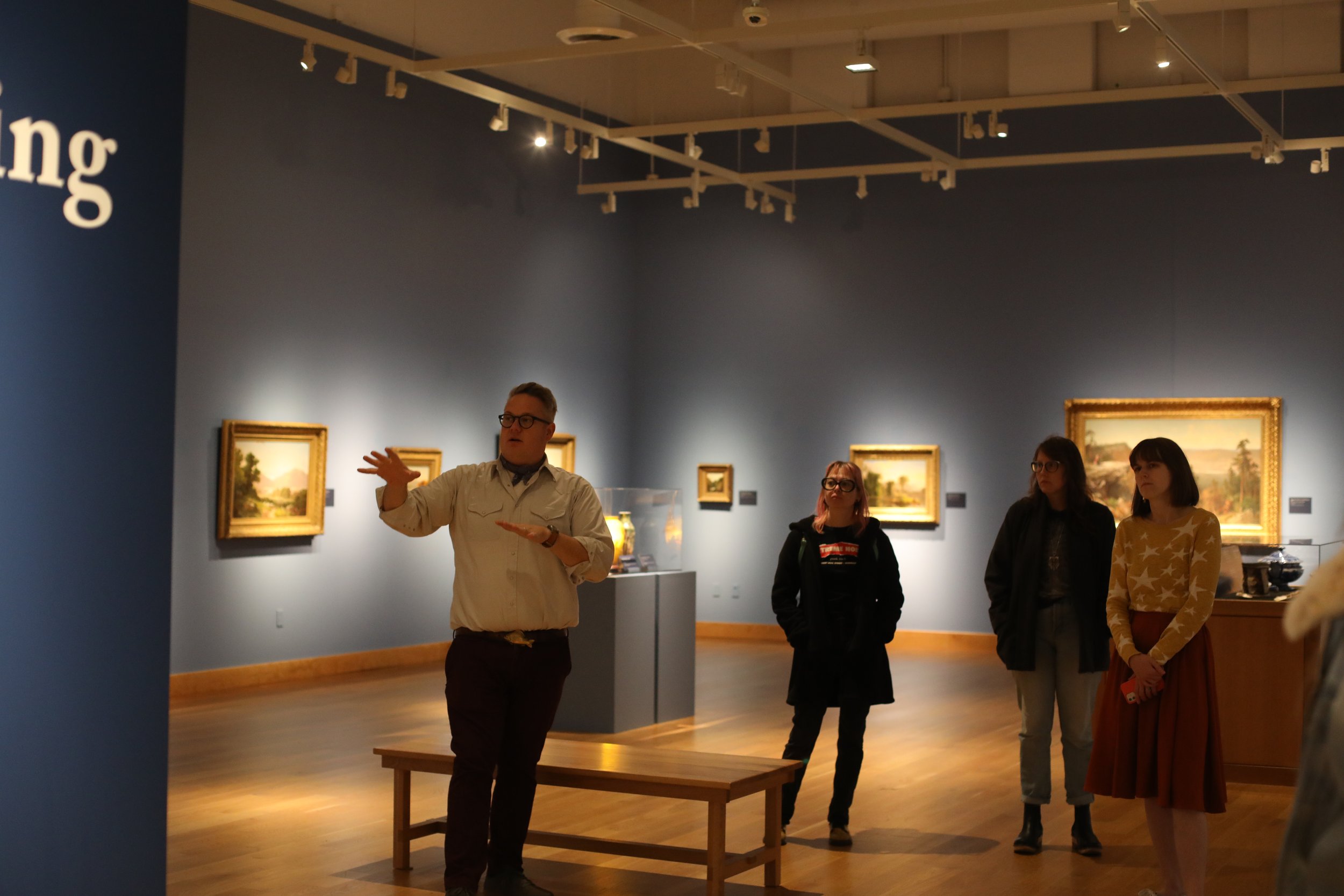
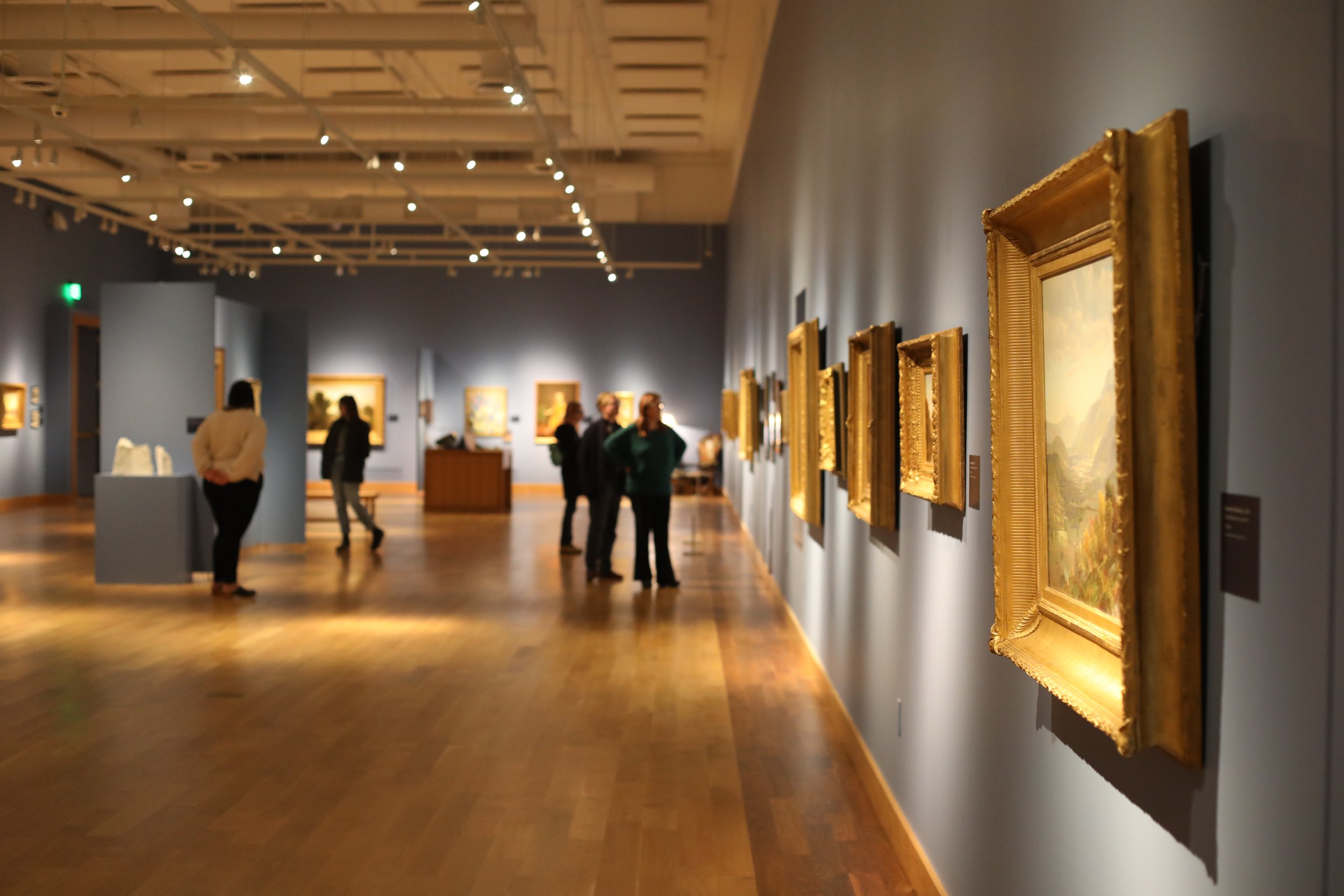
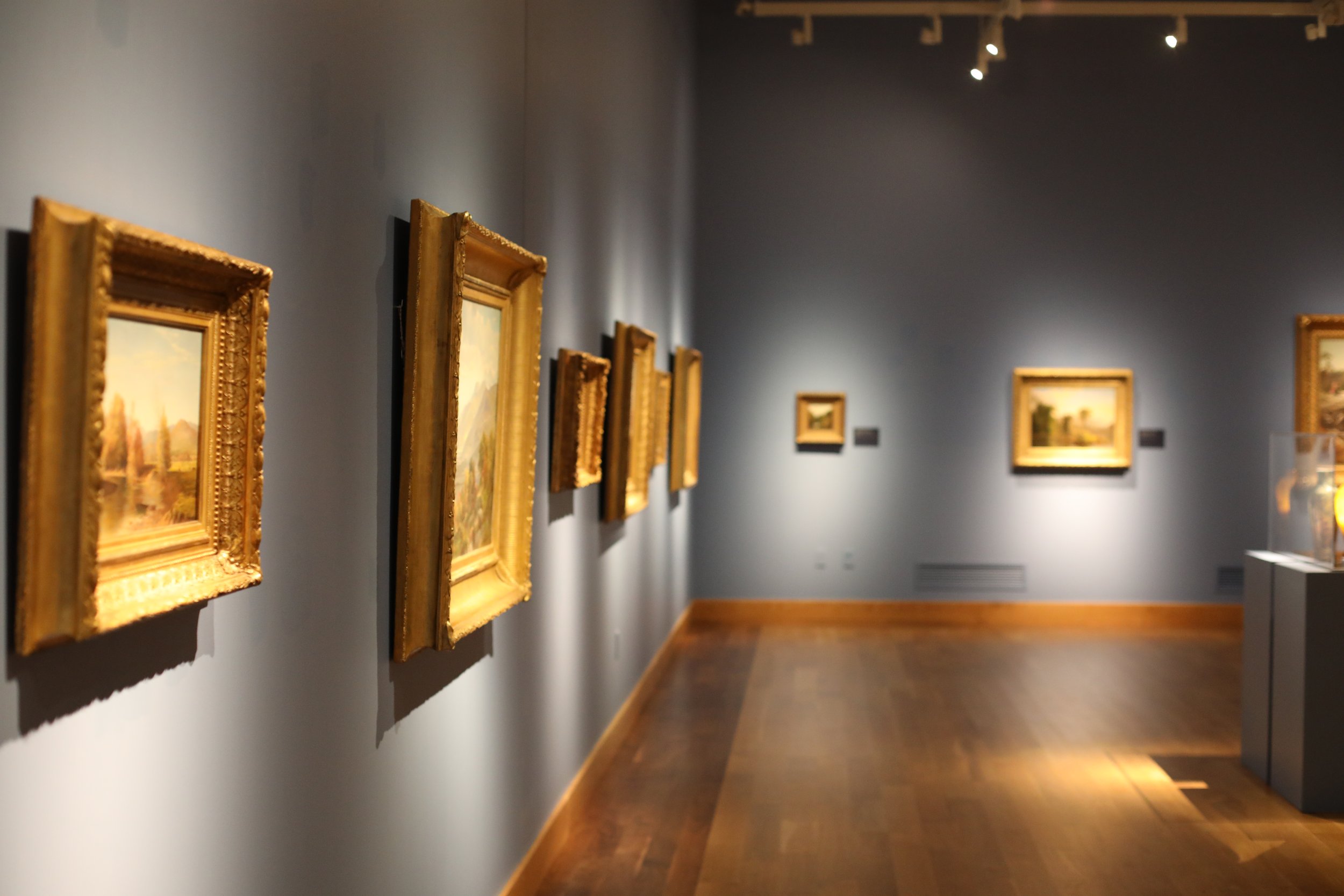
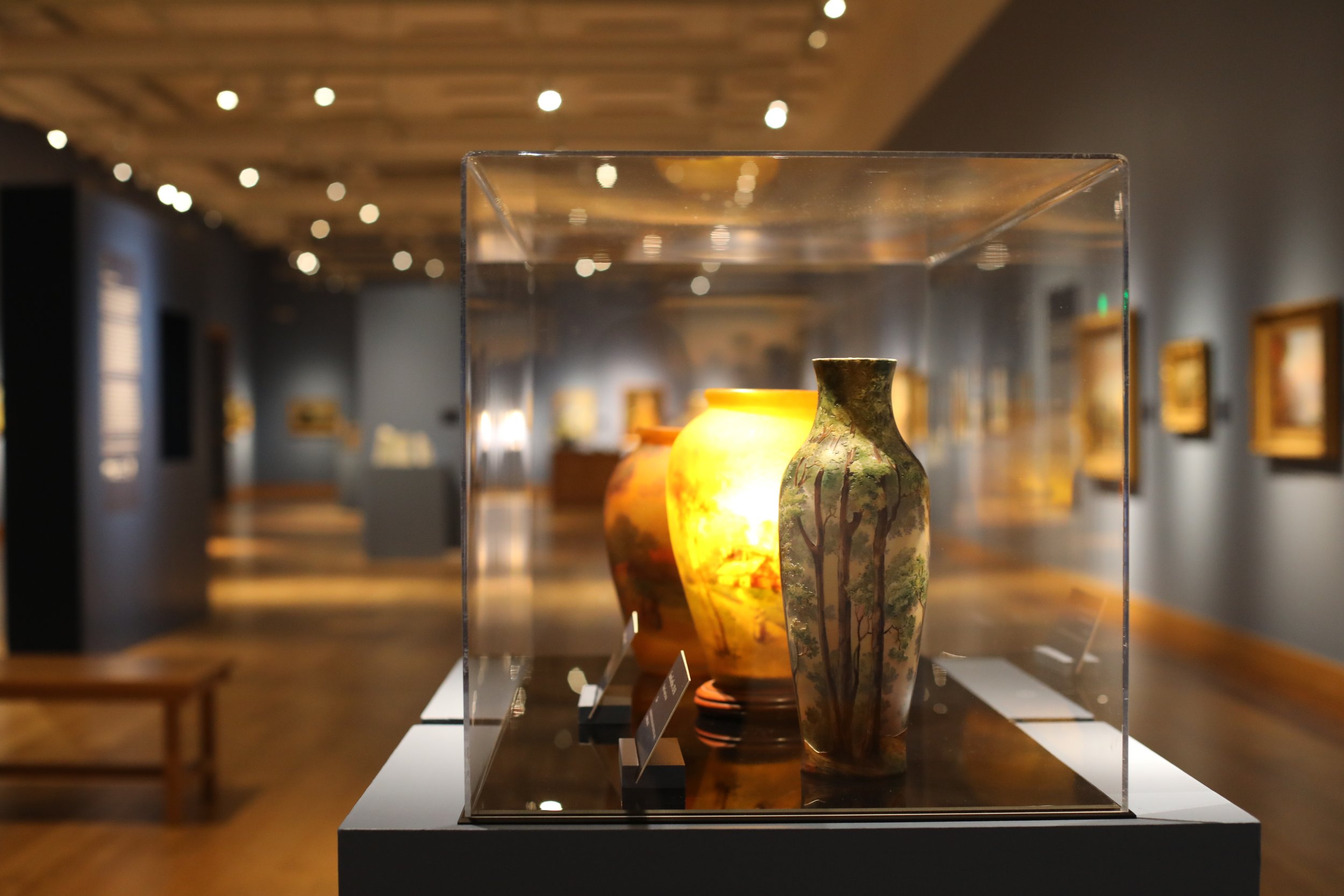
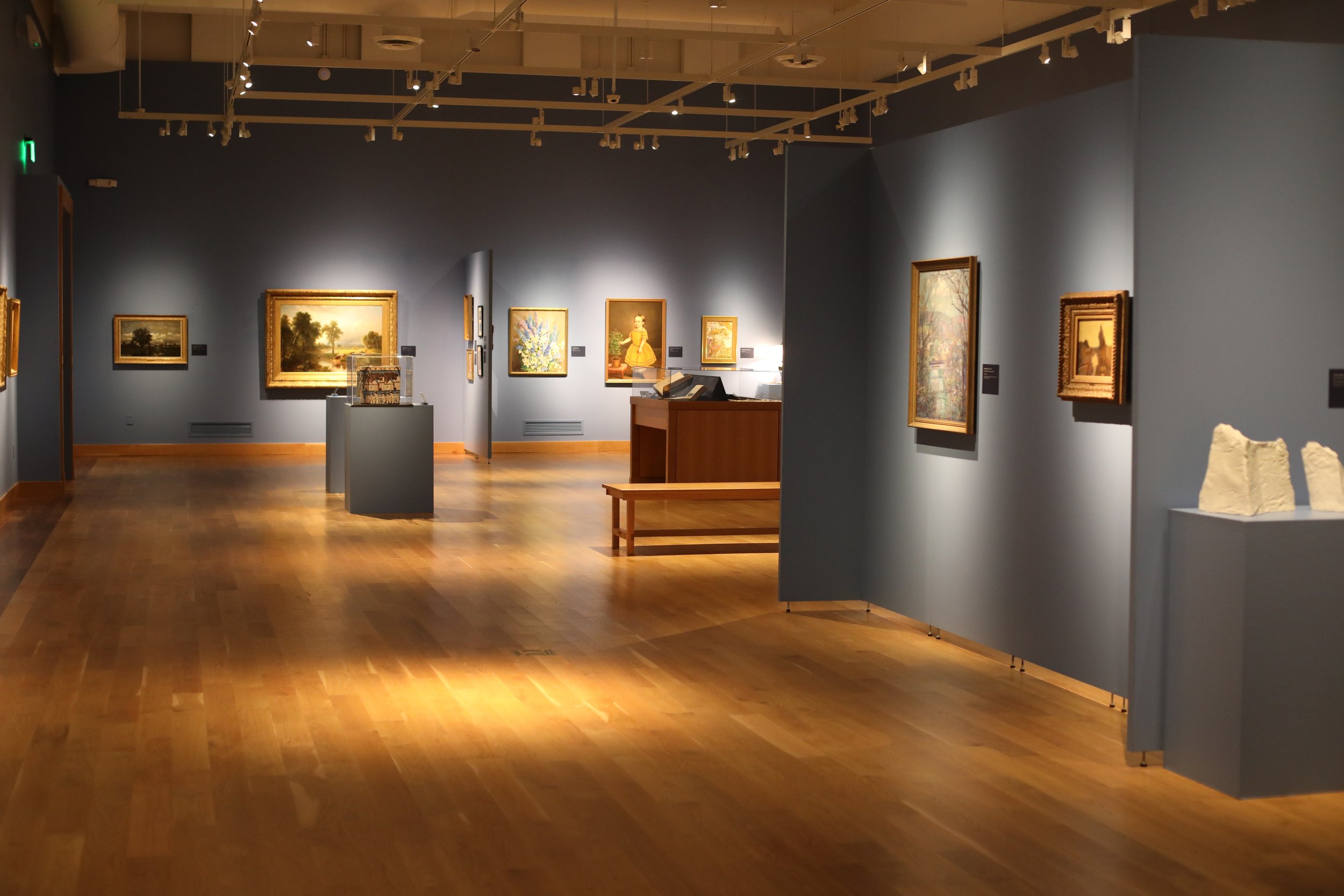
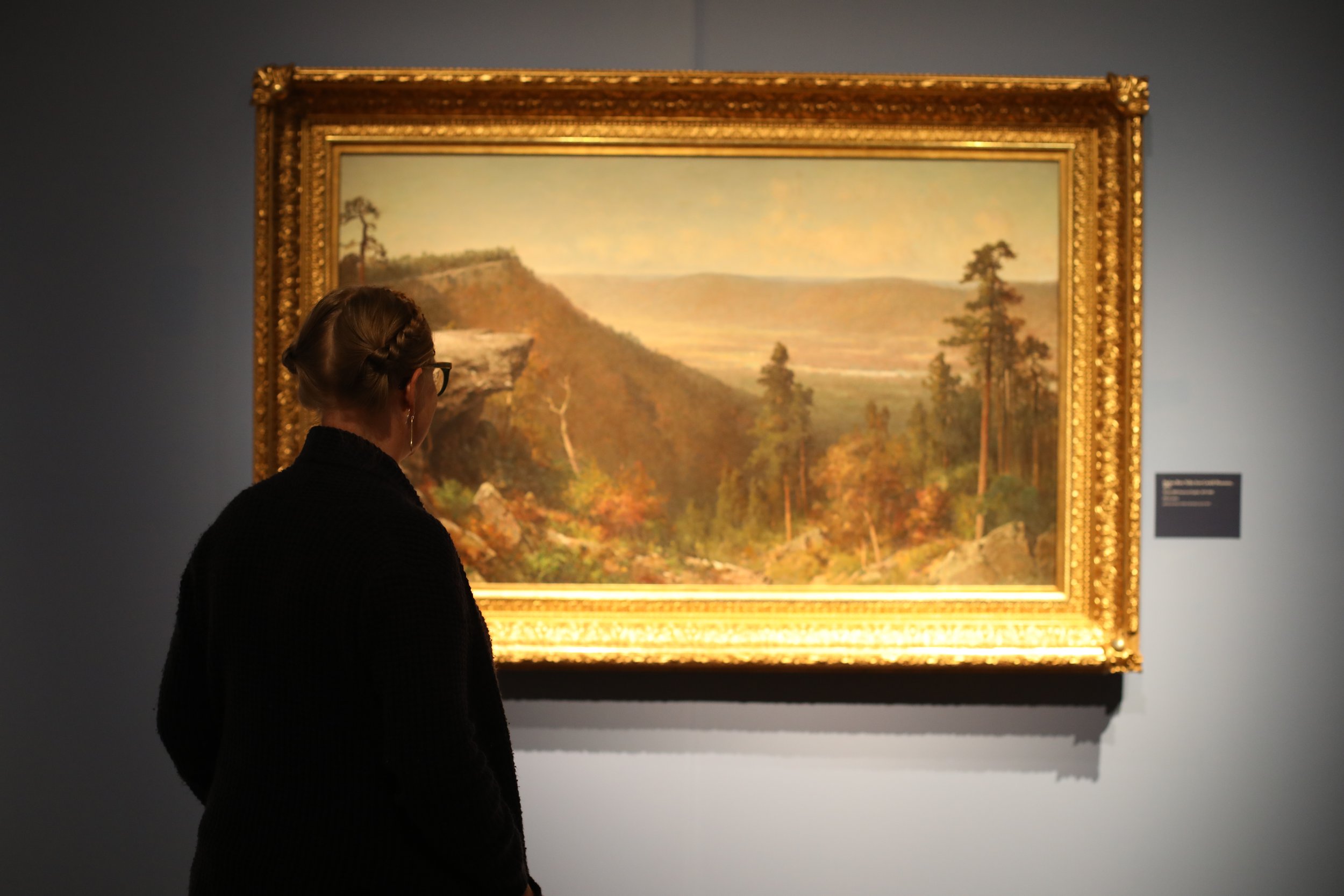
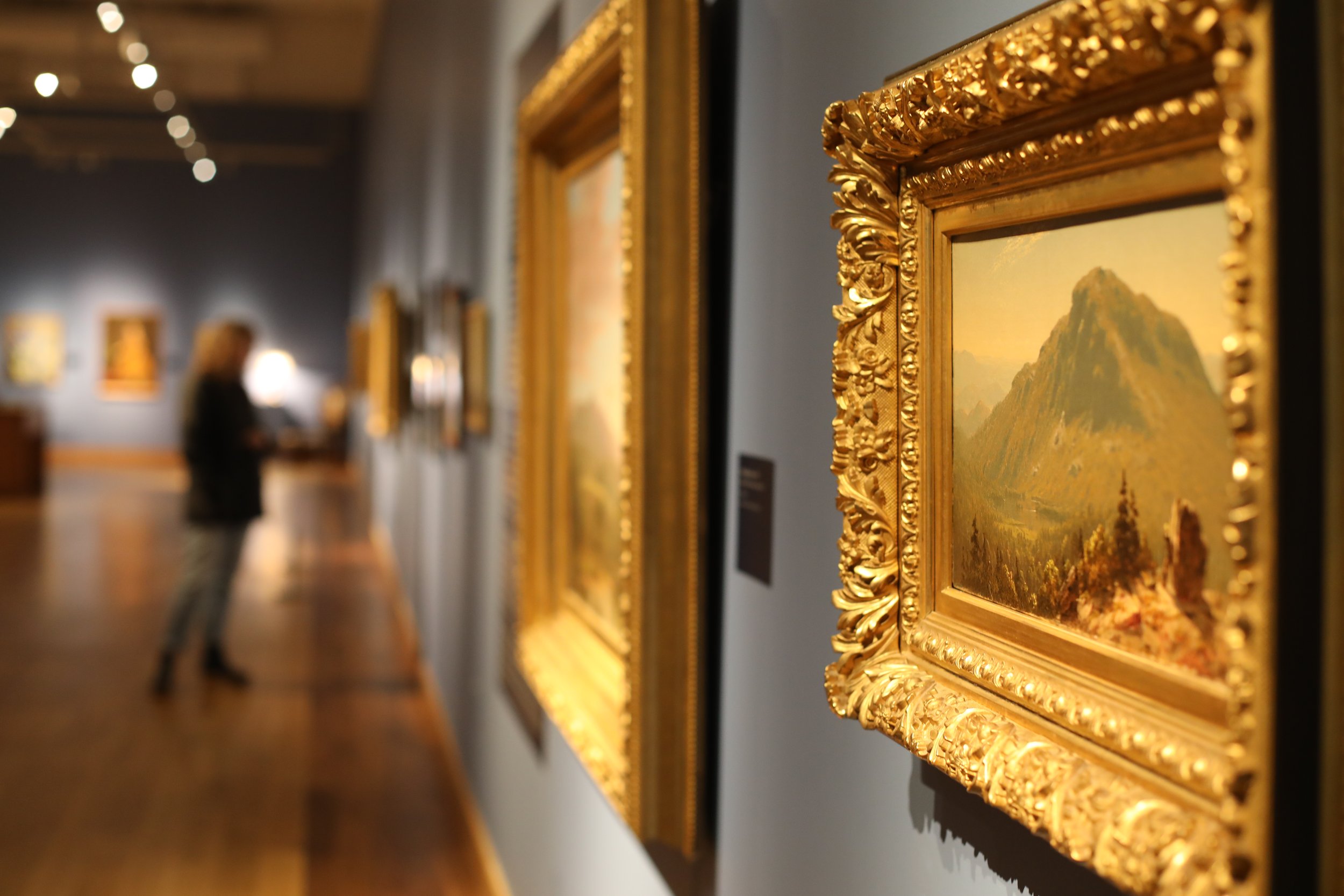
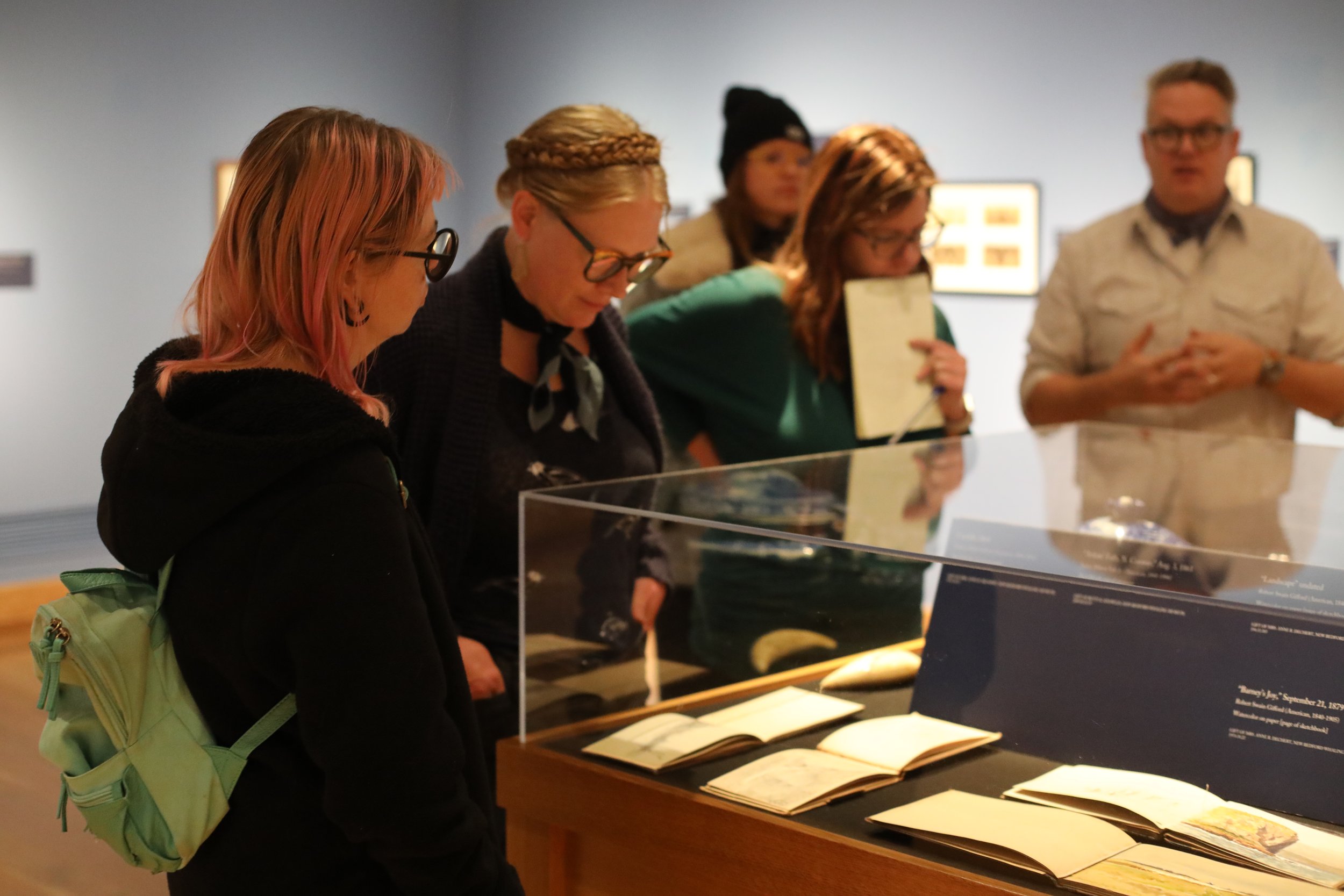
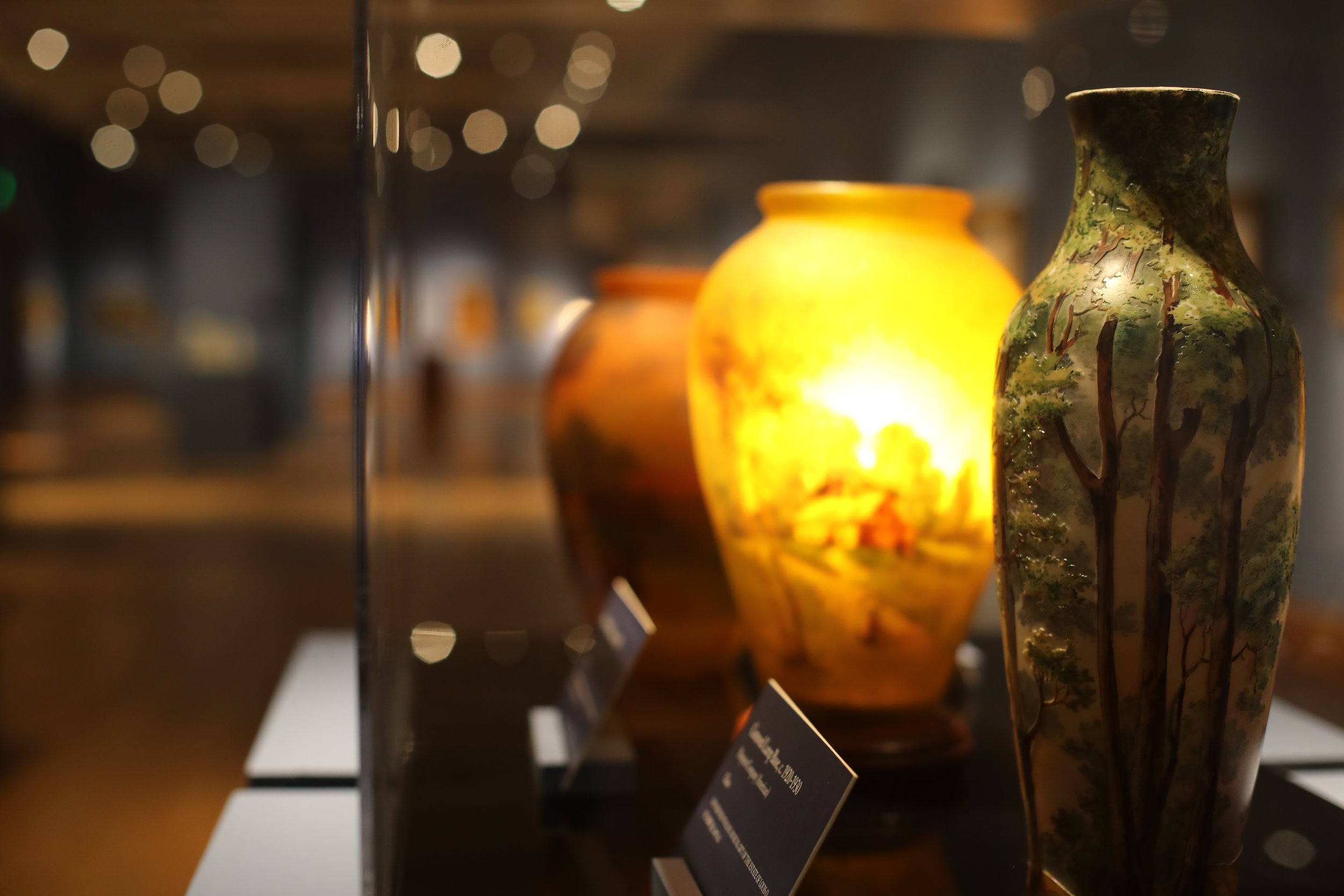
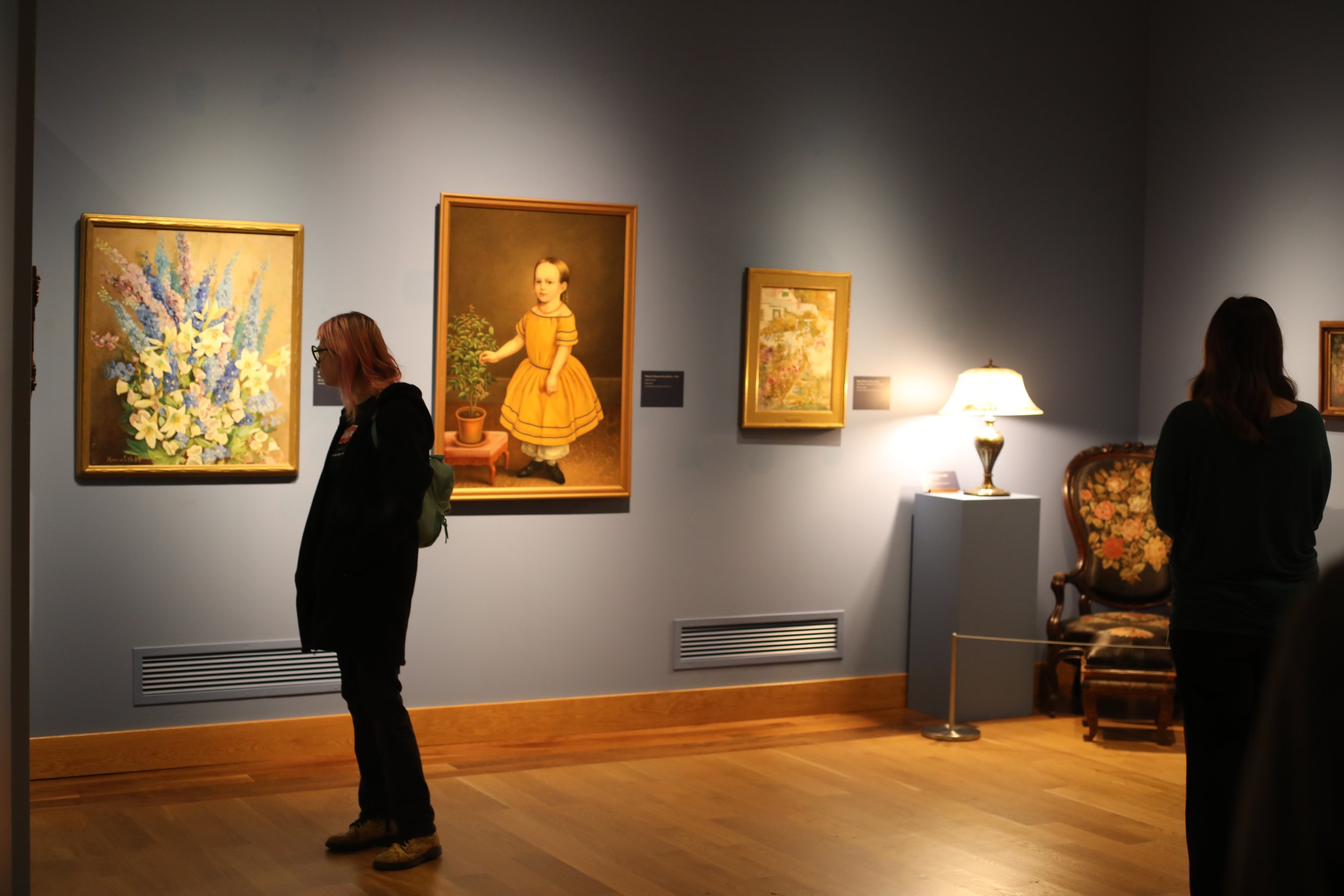

“this exhibition is quietly radical in its own way...”
“this exhibit and others — like it are some of the places in which people are sort of doing the work to reframe how we, you know, how we see the world. And that’s absolutely critically important.”
Listen or read the entire conversation on Minnesota Public radio between Alex V. Cipolle and Melissa Olson as they discuss Re/Framing the View:
Alex V. Cipolle, Minnesota Public Radio, May 20, 2024
Past Related Programming
Acknowledgements
The Minnesota Marine Art Museum is proud to partner with the New Bedford Whaling Museum to present Re/Framing the View: Nineteenth-century American Landscapes. This landmark exhibition and major publication have been made possible by funding from the William M. Wood Foundation, Cynthia and Douglas Crocker, Victoria and David Croll, KAM Appliances, Louis M. Ricciardi & Elizabeth M. Soares, Roger Servison, Mary Jean and William Blasdale, an anonymous donor, and other individual supporters.
We are grateful to private lenders and museum staff at partner institutions who supported loans, including Cynthia and Douglas Crocker; Tina and Paul Schmid; Frances Levin; Roger Servison; Victoria and David Croll; Carol Taylor and John Deknatel; Erica Hirshler and Ann Walt Tagliamonte at the Museum of Fine Arts, Boston; Maureen O’Brien and Tara Emsley at the RISD Museum; Carol Soltis, Kathleen Foster, Sophia Meyers, Hyunsoo Woo, Hannah Kauffman, Eileen Owens, and Teresa Lignelli at the Philadelphia Museum of Art; Jonathan Olly and Andrea Squeri at the Long Island Museum of American Art; Margi Hofer and Mark Schlemmer at the New York Historical Society; Christina Michelon and Lily Sterling at the Boston Athenaeum; and Michael and Stephan Winokur. We are especially thankful for the participation of Cynthia and Douglas Crocker, whose incredible collection of nineteenth-century American landscape paintings inspired the project and form the core of its display.
Special thanks to both our Museums’ Board of Trustees, members, volunteers and staff. Especially grateful to the incredibly dedicated and talented staff who contributed directly to the project: Naomi Slipp, the Douglas and Cynthia Crocker Endowed Chair for the Chief Curator; Emma Rocha, Curatorial Assistant; Melanie Correia, Exhibitions Manager; Emily Mead, Director of Philanthropy; Jennifer Smith, Manager of Institutional Relations; Jordan Berson, Director of Collections; Michael Lapides, Director of Digital Engagement; catalog contributors Darienne Turner, Elizabeth James-Perry, Astrid Tvetenstrand, and Jennifer Stettler Parsons; and Brian Bierig, Jacek Gancarz, John Morris, and Scott Benson, who assisted with design, object photography, copyediting of the exhibition catalog. And special thanks to Dr. Janelle Cooper and Kathleen Hanson for keeping the connections between the Upper Mississippi river and the East Coast alive and thriving.
